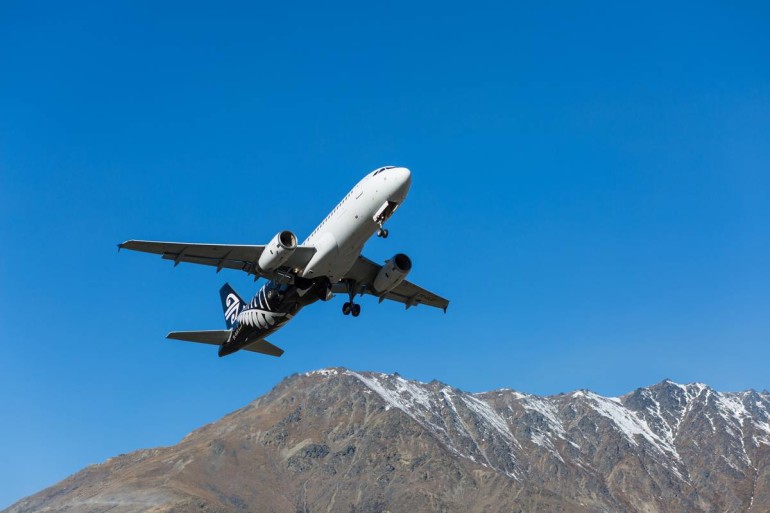Sponsored Listings:
It’s with some mirth that Kiwis observed travel-starved Aussies rushing to board “flights to nowhere”. In spite of the circular route, Qantas’ “joy flight” over the outback sold out in 10 minutes. A spokesperson for the airline said the 150 seats of the 787 was “probably the fastest-selling flight in Qantas history”.
Seats on the circular flight scheduled for October 10 cost upwards of $850, and were in huge demand.
The Australian carrier is not the first to float the idea of “flights to nowhere”. Airlines in Brunei, Taiwan and Japan have already been taking planeloads of physically distanced passengers for aerial sightseeing tours. Passengers seem thrilled with the idea, and the airlines are delighted. While international travel is disrupted, these carriers are able to find a use for the mid-range jets, which would otherwise sit unused, costing money.
Not everyone is thrilled with the arrangement, though.
Climate campaigners have denounced the joy flights as “simply emissions for the sake of it”.
Anna Hughes, director of the UK branch of Flight Free, told the Guardian that Qantas’ flight was a sign of our over-reliance on air travel.
“If that’s the society we’ve built, where we’re that addicted to flying, then we have a serious problem,” she said. “I understand why they are doing it – but it really is insanity.”

New Zealand flyers are just as curious about these flight “experiences”. Who has $1000 and seven hours to spend on a plane without a holiday on the other end of it?
And why hasn’t the business taken off here?
Just 40 years ago, New Zealand was home to one of the most ambitious joy flight services in the world. The Antarctic scenic flights operated by Air New Zealand might have been the most spectacular “flights to nowhere” ever to exist.
Flying 13 hours from Auckland to McMurdo Sound and back again, the seats cost $329 – or just under $1800 today.
Despite the price tag, the flights were hugely popular. In the three years operated – between 1977 and 1980 – Air New Zealand and Qantas carried about 10,000 paying passengers on circular flights over the frozen continent.
Providing inflight commentary from experienced Antarctic explorers and inflight meals, it was a bucket-list flight for aviation enthusiasts. The service was “solidly booked”, with many passengers having to book onto later fares. Behind Kiwis, the flight was popular with Japanese and American passengers – some of whom came to New Zealand specifically for the flight.
However, on November 28 1979, the service went from being the “opportunity of a lifetime” to “unsellable” after the ill-fated Flight TE901. The Mount Erebus disaster killed all 237 passengers and 17 crew, when the DC-10 crashed on the continent.
Air New Zealand ceased the service “immediately” after the tragedy, and Qantas stopped its Antarctic service three months later, in February 1980.
However, this did not stop business entirely.
In Australia, Antarctica Flights has been offering charter flights since 1994. This year the company is chartering Qantas Boeing 787 aircraft for seven services from Australian airports – “no luggage or passports required”.
Australians have been willing to board “flights to nowhere” for years – well before the pandemic narrowed down flight options.
However, even today the service is a difficult sell on this side of the Tasman.
When in 2015 the company tried to expand its Antarctic flights to New Zealand airports, Antarctica Flights met resistance. The charter carrier was on the brink of re-launching Kiwi scenic flights over the Subantarctic islands and Antarctica – and had planned to use Air New Zealand planes, but these plans were abandoned.
The company told the Herald scenic flights from New Zealand should have still been a viable proposition, but it had not expected the backlash.
“In terms of re-launching into New Zealand , there is still some sensitivity around the Mt Erebus disaster,” said a spokesperson. “Market size is not an issue.”
Having just passed the 40-year anniversary of flight ET901 last year, the issue is still raw.

In response to concerns the company is running scenic flights to one of the places most vulnerable to climate change caused by air emissions, the company is issued a statement.
“Antarctica flights is committed to protecting the planet,” they said, and they are “committing to carbon offset each flight in order to protect this unique, precious, last great wilderness.”
This season’s Antarctic flights will operate between November 22 and February 21 next year; seats sell for AU$1199 ($1,295) from Sydney, Melbourne, Perth, Melbourne, Brisbane and Adelaide.
However, New Zealand travellers wanting to fly to Antarctica will have to wait, at least until travel opens up again across the Tasman.
A spokesperson for Air New Zealand said the airline had “no plans to operate sightseeing flights to Antarctica”.
With regards to Qantas’ joy flights over Australia, Air New Zealand says they “don’t have any plans to do these scenic flights given our domestic network is up and running”.
For now, a flight over the Southern Alps or past Mt Taranaki is far shorter and cheaper than a 12-hour sortie over the South Pole.
Source: nzherald.co.nz










